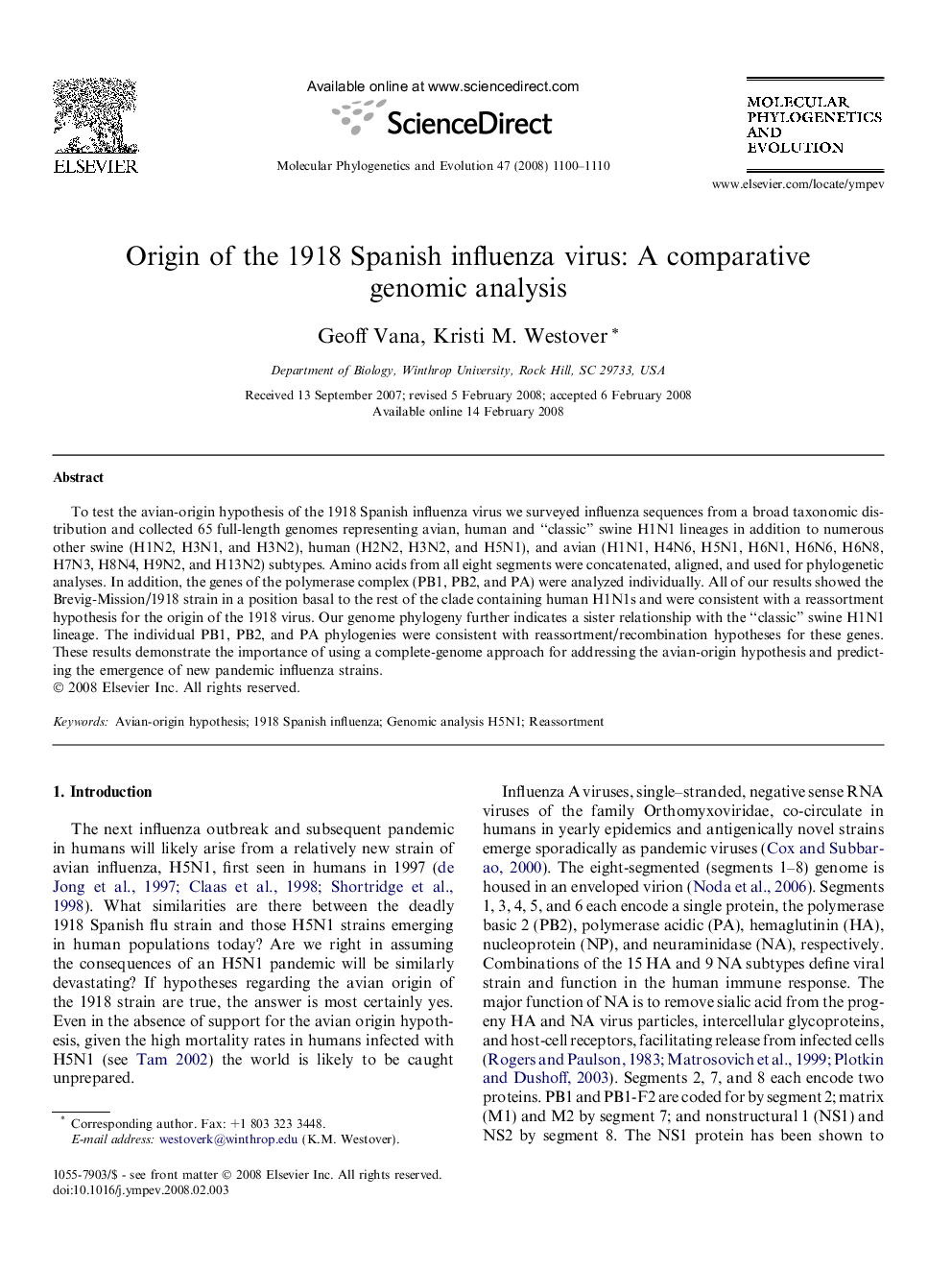| کد مقاله | کد نشریه | سال انتشار | مقاله انگلیسی | نسخه تمام متن |
|---|---|---|---|---|
| 2835305 | 1164338 | 2008 | 11 صفحه PDF | دانلود رایگان |

To test the avian-origin hypothesis of the 1918 Spanish influenza virus we surveyed influenza sequences from a broad taxonomic distribution and collected 65 full-length genomes representing avian, human and “classic” swine H1N1 lineages in addition to numerous other swine (H1N2, H3N1, and H3N2), human (H2N2, H3N2, and H5N1), and avian (H1N1, H4N6, H5N1, H6N1, H6N6, H6N8, H7N3, H8N4, H9N2, and H13N2) subtypes. Amino acids from all eight segments were concatenated, aligned, and used for phylogenetic analyses. In addition, the genes of the polymerase complex (PB1, PB2, and PA) were analyzed individually. All of our results showed the Brevig-Mission/1918 strain in a position basal to the rest of the clade containing human H1N1s and were consistent with a reassortment hypothesis for the origin of the 1918 virus. Our genome phylogeny further indicates a sister relationship with the “classic” swine H1N1 lineage. The individual PB1, PB2, and PA phylogenies were consistent with reassortment/recombination hypotheses for these genes. These results demonstrate the importance of using a complete-genome approach for addressing the avian-origin hypothesis and predicting the emergence of new pandemic influenza strains.
Journal: Molecular Phylogenetics and Evolution - Volume 47, Issue 3, June 2008, Pages 1100–1110